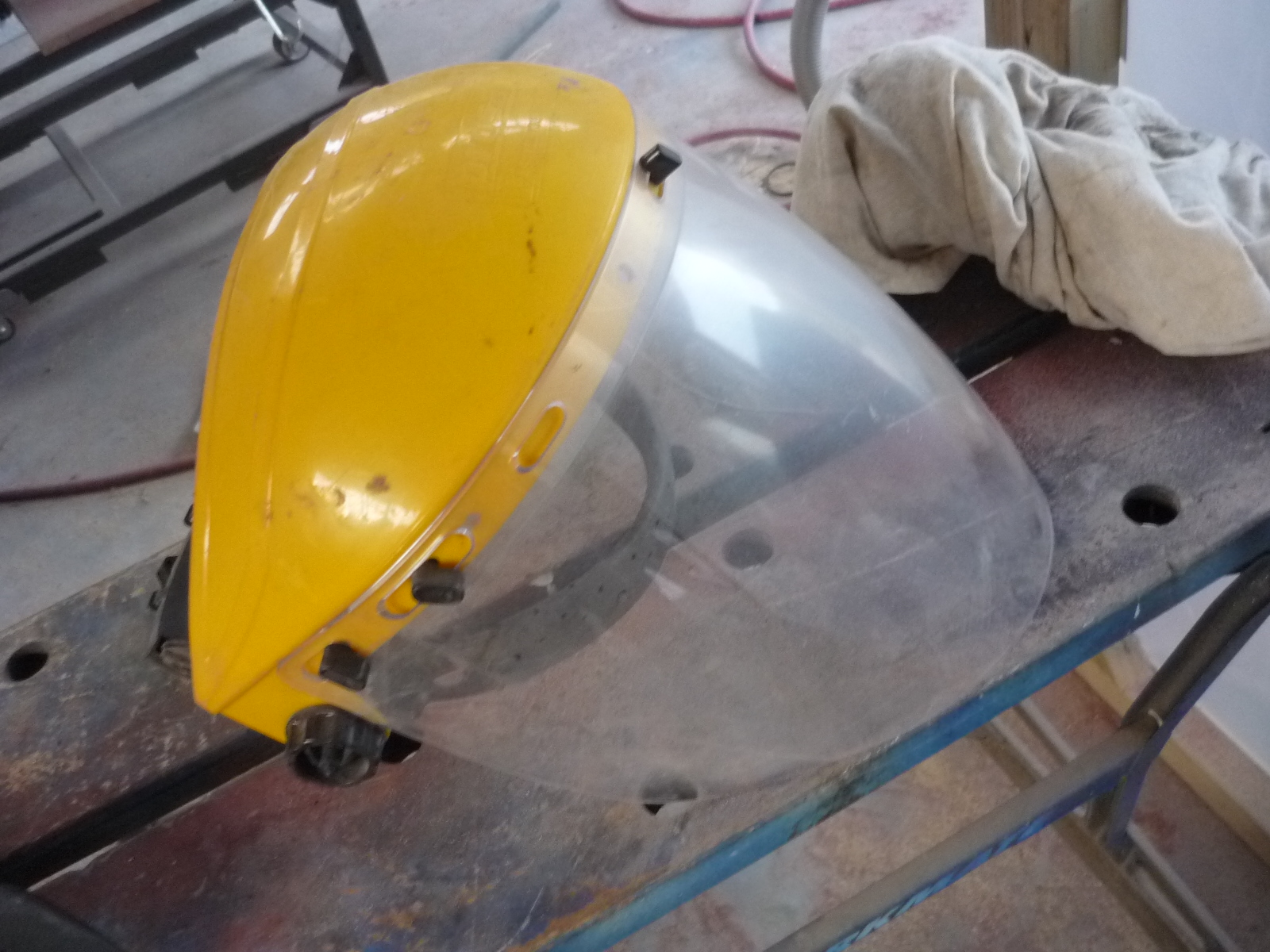This is the pressure pot. It is the standard cheapo Chinese kits that all the discount tool shops seem to be selling. It is not a great tool but it is cheap and it is adequate. This is the smaller of two they had on offer and I think the right choice; it is very heavy when full and one twice the size would be difficult to manage since you have to drag it around the work area. This size give about 30 minutes blasting. The sand is poured in through the red lid on the top. Note that this is the largest opening to the vessel so you really need to be careful not to get any big lumps or foreign objects in there; it would be difficult to get them out again.
The grit destroys everything in its path including the air valves and the ceramic blasting tips. I am blasting with a C-grade garnet which is quite coarse removing paint and rust easily.
The tips wear very quickly, you would be lucky to get an hour's blasting from each. These are 3mm tips but as they wear the bore increases and pressure is lost. These are about $8 each I will have spent $100 or so in tips for the cab. The garnet is $22 for 25kg. It is largely recycled by sweeping it up and sieving it so it lasts quite a while. Blasting the cab has will probably use up 50kg.
 This is my compressor. It is about as big as you can go on single phase and needs a 15A supply. It can only just keep up with blasting with a 3mm tip. As soon as the tip starts to wear you have to stop occasionally to let the compressor catch up.
This is my compressor. It is about as big as you can go on single phase and needs a 15A supply. It can only just keep up with blasting with a 3mm tip. As soon as the tip starts to wear you have to stop occasionally to let the compressor catch up.
There is a sort of fabric balaclava helmet that came with the blaster and I use a dust mask and this face shield inside it. It does not work that well; the glass steams up and the sand destroys the plastic visor so that you end up working though a sort of fog.
Other kit is shown here - a dustpan for scooping the sand off the floor, an ordinary household sieve for cleaning it and a funnel with a large opening for putting it back into the pressure vessel. Front right is the dust mask which is pretty much essential through the whole process.
Compressing that much air generates a lot of water in the air lines and this in turn clogs up the sand as it flows out of the bottom of the pressure vessel which is very annoying. I'm running two water separators in the air line and they remove plenty of moisture but still not enough.






















